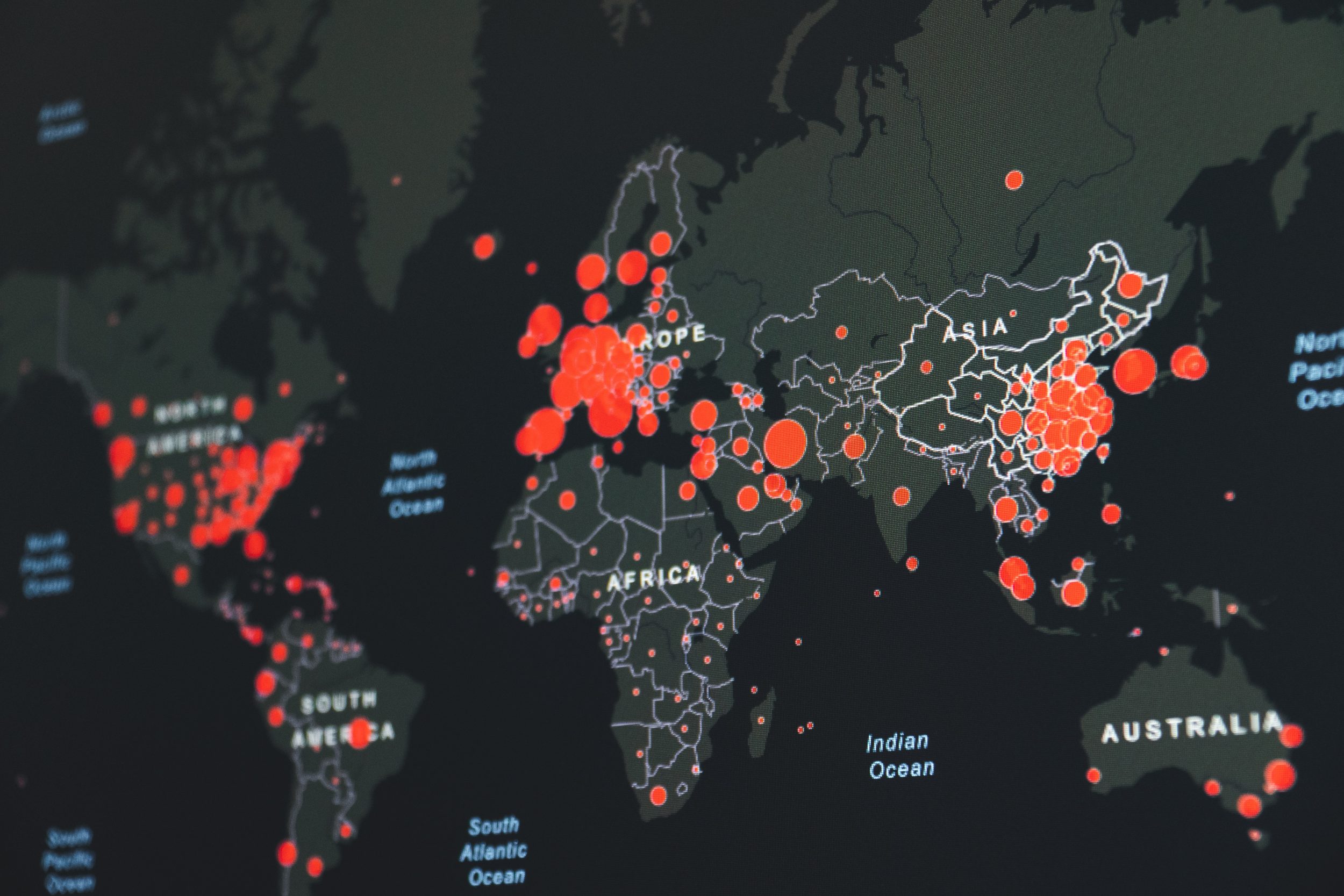 It is a difficult time for brands around the world as they seek to effectively and sensitively communicate with their audiences and customers at a time of unprecedented stress for many. Here Sumera Dang, Masters student at LSE, looks at some of the new emerging trends and underlying shifts that are surfacing in the world of marketing and how brands are adapting to changing consumer culture.
It is a difficult time for brands around the world as they seek to effectively and sensitively communicate with their audiences and customers at a time of unprecedented stress for many. Here Sumera Dang, Masters student at LSE, looks at some of the new emerging trends and underlying shifts that are surfacing in the world of marketing and how brands are adapting to changing consumer culture.
A key challenge faced by brands today is to tackle coronavirus communications and advertising in a way that does not pretend that the pandemic has truly come to a halt. With rising tensions around restarting economies, going into and coming out of lockdowns has become part and parcel of government strategy. Grappling with such uncertainty, the world of marketing has seen significant shifts in the digital strategies that have proven to drive brand management and consumerism in such times.
From attention economy to trust economy
Perhaps the greatest paradox of these times is the rise in the number of eyeballs glued to digital platforms coupled with the lack of investment by brands in digital advertising. The hype around the Attention Economy has crumbled under the weight of COVID-19. However, this pandemic has given rise to an underlying economy which has been bubbling in the background for the last few years – the Trust Economy.
As a result of concerns around data management and fake news, ‘trust’ began to play a larger role in customer attraction than mere product capabilities and frilly advertisements. Living in a constant environment of information, the awareness around data ownership and data brokerage by large corporations came to the forefront of many consumer decisions. However, with the sudden outbreak of an unprecedented pandemic and the subsequent rise in digitization, the incorporation of trust-based communication strategies has been expedited. Trust has amplified the perceived value gained by a consumer, thus driving a greater retention rate within a brand.
Brands have been successful in building trust through attentiveness, transparency, and simplistic communication. Transparency about safety measures, aligning with customer concerns, and getting straight to the point has been a key enabler of trust in this time. McDonald’s Philippines displayed this strategy by creating a video where CEO Kenneth Yan detailed the safety measures the company was taking for the safety of its employees and customers. While this may seem intuitive, McDonald’s communication is effective as it differs from a flood of advertisements that present employees as ‘heroes’ which has later received significant criticism for its generalization and overlooking the necessity of seeing these employees as individuals who also need protection. Many companies have also had positive feedback from rapidly developing corporate social responsibility initiatives which are giving back to the community during these hard times, from Tesla reorganizing its production lines to build and donate ventilators, or Uniqlo’s clothing factories producing masks for donation to multiple countries.
2020 has enforced the need for brands to show their loyalty to customers instead. In many ways, a brand’s loyalty to its consumers is tested by such times and those that are able to put a humane foot forward triumph as trustworthy brands. In this trust economy during COVID-19, consumerism is driven by allowing customers to “pull” the required information from the environment, rather than having the information “pushed” onto them.
From product to brand
While most marketing and advertising strategies in recent years have focused on driving product sales and increasing product placements in popular culture shows, as well as through the rising influencer culture, with the pandemic, strategies have shifted to pure brand image building. Brands have employed two key approaches – Protection and Enhancement. Brands following the former approach have chosen to lay low, stop advertisements that were previously running, and distance themselves from the negative news uproar with Covid-19. Those taking the latter, however, have kept the larger picture in mind and focused on integrating themselves in solution-generation in the midst of a global crisis.
Successful communication strategies today involve speaking up, humanizing content, and taking a responsibility-first approach. A key example of this is seen in the #ShareASquare campaign from Cotonelle, one of the largest producers of toilet paper. Through this, the toilet paper company discourages panic buying, which some might say sounds counterintuitive to their sales strategy. However, keeping empathy at the forefront and encouraging individuals to “stock up on gratitude” instead of toilet paper, has placed the brand in a human space where it cares and understands the larger global battle we are facing. Another great example is Nike encouraging customers to “play inside” and stay at home. While seemingly counterintuitive for a sports brand that thrives on individuals leaving their home to exercise, Nike takes the responsible and empathic approach to communicating with its customers, while still staying consistent with its brand voice.
From conversion to conversation
The final shift seen on a day-to-day level has been from sales focused conversion to conversation. Social listening, sentiment analysis of audiences and truly comprehending the lives of customers has become imperative. This pandemic has disrupted all past data trends on customer journeys and prompted a renewed need for brands to listen.
Reebok, for instance, started the conversation on Twitter to understand what existing exercise equipment most customers own and helped to create work-out routines around this. Another commendable example is the baby products brand Water Wipes that created a virtual group for new parents called “Early Days Club”. The brand has added value through facilitating conversations amongst members about parenting advice and challenges being faced while raising a child during the pandemic. Multiple other brands have followed this communicative approach that has resulted in platforms making online courses free for all, restaurants releasing their famous recipes and other free subscription opportunities.
These mechanisms have proven to aid consumers through the ‘stay-at-home’ mandate and further increased user acquisition through generosity during this time. Moreover, the use of user generated content (UGC) has made many audiences feel associated with the process – there has been a rise in UGC based Music videos, advertisements and online ‘challenges’. Thus, consumer centricity continues to become even more important during the pandemic and compassion is imperative towards relationship building. This new normal is bringing a welcome transition for the world of advertising, where brand voices were previously getting lost in the competition to gain temporary attention, and brands were losing sight of long-term investment in users as humans through authenticity.
Politics: empathy over assertion
Along with brands, the realm of political communications has also seen a change. In an event held this summer by LSE Department of Media and Communications and the Cardiff School of Journalism, Media and Culture, it was pointed out that women leaders, who are generally expected not to display certain forms of femininity or show maternal care to the population, have used tactics based on empathy to deliver some of the most effective COVID-19 communications.
A key difference was demonstrated through the positions taken by Boris Johnson, the UK Prime Minister compared with Nicola Sturgeon, the Scottish Prime Minister. UK government speeches emphasised war rhetoric to address the pandemic while using connotations of ‘heroes’ and ‘sacrifice’. The pivotal Johnson speech stated that “many more families are going to lose loved ones before their time,” which provided a tough-love stance, publicly declaring that collateral damage is inevitable. While transparency is good, effective communication strategies should take into account the nuanced emotional repercussions within the population.
In contrast, the Scottish prime minister was able to incorporate sentiment analysis of the population and address the nation with an empathy that resonated with each individual. Sturgeon spoke about the rising number of deaths and the numeric requirements of reporting cases, however, she took a minute to pause and recognise that these numbers are in fact real human beings. The mere acknowledgement that the world obsessed with the need to reduce “numbers” which in reality represent families who are aching over the loss of loved ones, created great appreciation for the Scottish Prime Minister. Such communication strategies have been used by New Zealand prime minister Jacinda Arden, who has received equally positive feedback.
While confidence and assertion have been archways of gauging effective leadership, this pandemic is demanding a holistic form of leadership where leaders are evaluated on their ability to absorb and adapt to situations they may not be as confident about. Direction, consistency and empathy have been the three most effective styles incorporated in tactful political communications.
These large underlying trends are slowly shifting the core of industries and the way that communication takes place. While such shifts are being fueled by unusual patterns of consumerism, some trends are here to stay much after the pandemic. Visionary brands are choosing the wise path to adapt functions to a digital-first pattern of consumerism where trust, brand virtues and conversations will stand at the forefront of establishing customer relationships.
This article represents the views of the author, and not the position of the Media@LSE blog, nor of the London School of Economics and Political Science.
Featured image: Photo by Eleni Afiontzi on Unsplash





